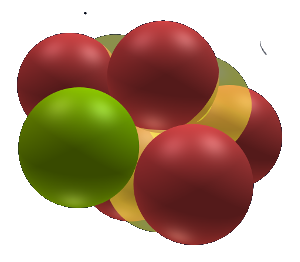Current science has no theory for the structure of the nucleus of an atom. The belief is that the nucleus is composed of protons and neutrons but they aren't organized in any manner. I call this the chaotic blob model of the atom. The Structured Atom Model (SAM) states the nucleus is highly structured and stable. The nucleons (protons and neutrons) that make up the nucleus are organized in a highly predictable and stable structure. This structure is responsible for the shape and layout of the periodic table.
In 2006 Edo Kaal from the Netherlands experienced life changing issues that left him questioning everything he knew. He no longer trusted most of what he had been taught. He realized he had to forget everything he had been taught and start with what he actually knew. He started with a few simple observations:
- Everything is dual in nature - male and female, hot and cold, positive and negative.
- Nature tends to build things by drawing matter to a common center.
- The world is built from 3 dimensional objects that have volume.
- The Isomers Potassium 40, Calcium 40, and Argon 40 all have the same number of nucleons but have very different properties - Edo concluded from this there must be a structure to the nucleus.
He started playing with marbles and observed the structures they made. By taping and gluing them together he created cylinders, spheres, cubes, etc. He imagined a central drawing force pulling the marbles to a common center. He came to the realization that in order to be stable the marbles had to be densely packed.
After three years of experimenting he found a shape with 7 spheres that he thought could explain the third element - lithium. Three more years of work and he found a shape with 12 spheres that made carbon, the 6th element. Carbon consists of 12 nucleons in the shape of an icosahedron, one of the 5 platonic solids. By combining the carbon icosahedrons together he found the larger elements.
Here are some of the properties of the elements that are explained with SAM:
- Why are there no elements with 5 or 8 nucleons?
- Why does valence follow the "Law of Octaves" -- 0, 1, 2, 3, 4/-4, -3, -2, -1, 0
- Why do metals conduct electricity?
- Why are the noble gases inert?
- Why do elements in the same column of the periodic table have similar properties?
- Why do elements become unstable as they get larger?
- Why do larger elements have more neutrons than protons?
- Why does Oxygen combine with Hydrogen to make H20, a bi-polar molecule? Why isn't H20 symmetrical and therefore neutral?
SAM will change our understanding of chemistry and physics. It gives us the ability to explain things we couldn't before. One of the most exciting aspects is it explains how the elements are created. Prevailing science believes the elements are created in high energy events such as a supernova. However observation shows it happens all around us here on Earth. For example:
- Chickens create calcium from potassium.
- Electric arc welders create carbon monoxide from nitrogen gas.
- Carbon life forms are fossilized by being converted into calcium and magnesium.
- Lightning creates Carbon 14 from air.
There are many more examples and all of these can be explained very simply with SAM. We've been told the elements don't transmute naturally here on Earth. Observations tell us otherwise. We've never had a model for the nucleus to understand how these transmutations could occur. SAM is going to change all that.
In addition SAM is a structural theory, it does not require a degree in advanced mathematics to understand. The atoms can be built using cheap magnets and held in your hand - they can be felt and experienced physically. I've taught young children how to build an Neon. This theory brought the fun of chemistry into my life and I know it will for others. This is going to be big.
- Log in to post comments
